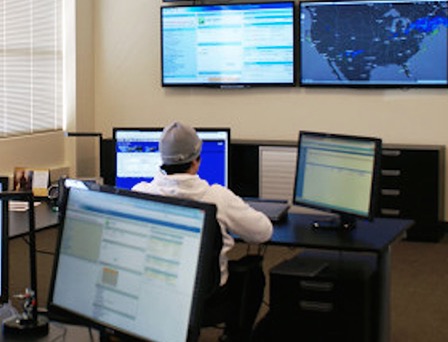Broadcasters Urged to Yell ‘Action’ on Big-Screen Release Plans

In January, the BBC did something that broadcasters have long avoided. They gave their hit TV special Sherlock: The Abominable Bride a limited theatrical release worldwide, with an additional 20 minutes of footage bringing it closer to the length of a feature film.
It wasn’t the first time BBC experimented with a theatrical engagement for one of its TV specials. In late 2013, Doctor Who: The Day of the Doctor saw a limited theatrical release after the special aired on TV. And both times, BBC’s gamble paid off, with decent box-office receipts.
HBO experimented with the idea in 2015, with episodes of Game of Thrones hitting IMAX screens. Syfy did it with the first Sharknado film in 2013. And it’s not just a new-millennium idea: MGM did something similar with the 1960s series The Man From U.N.C.L.E., adding on to eight episodes and putting them in theaters.
But the examples are few and far between, and almost always come after the fact, with broadcasters only looking to theaters after shows have aired. Randy Blotky wants that to change.
The CEO of the Digital Cinema Distribution Coalition (DCDC)—a theatrical digital delivery endeavor formed by AMC Theatres, Cinemark Theatres, Regal Entertainment Group, Universal Pictures and Warner Bros.—said he believes the technology is finally good enough for traditional broadcasters to use theaters to full advantage, even simulcasting live into movie theaters the night of premieres.
Blotky spoke with Next TV’s Chris Tribbey about the potential for broadcasters to make their biggest properties even bigger, the technical hurdles that may still exist and examples from other corners of entertainment that pay TV companies should consider. An edited transcript follows.
NTV: What are some of the bonus offerings that have been included for theaters (red carpets, panels, etc.) and what other potentials exist?
Broadcasting & Cable Newsletter
The smarter way to stay on top of broadcasting and cable industry. Sign up below
Randy Blotky: Last year, 2015, we launched the ability for theaters to screen alternative and live content. Since then the examples of events that we have helped distribute have been of a wide range. The first one we did was a League of Legends eSports tournament and we have also distributed the League of Legends World Championships since then. We have distributed multiple ballet performances, a full red carpet broadcast from L.A. before the world premiere of Kung Fu Panda, and also post-film Q&As, most recently after a preview screening of Hell or High Water with the film’s director and cast.
NTV: How might broadcasters take advantage of what DCDC offers? What challenges or concerns might prevent them from doing so?
RB: The DCDC network is a very cost-efficient platform for anyone looking to broadcast a live or pre-taped event into movie theaters. That means television broadcasters as well. It could be a highly effective additional marketing tool for the right show.
For big premieres or finales of major shows that are still watched live by large audiences, by broadcasting the show into theaters it would draw out fans to share in the excitement together within a packed theater. To provide an added bonus for the audience, perhaps one could broadcast a live panel with the creator and some members of the cast after the show.
For OTT services and premium networks that are looking to convert customers, a live premiere and panel as mentioned above is also an excellent time for face-to-face engagement with potential new subscribers.
There are also the live musicals. These have been a huge hit for the broadcast stations in the recent year. The ratings for Grease and The Sound of Music were great. Why not take it a step further and broadcast that live performance through the DCDC network into theaters?
There could also be a place for the finales of live event competition shows to find their way into theaters.
NTV: What are some of the technical hurdles in live-streaming digital, and how do we overcome them?
RB: The answer to this question could, and sometimes does, fill volumes. Suffice to say that DCDC is now well-versed enough in electronically delivering live digital content in a high-quality way to meet the exacting standards of our growing community of exhibitor customers (e.g. “theater-ready content,” 1080p on the screen, up to 60fps, and AC3 5.1 sound), that we are entirely comfortable in this milieu.
